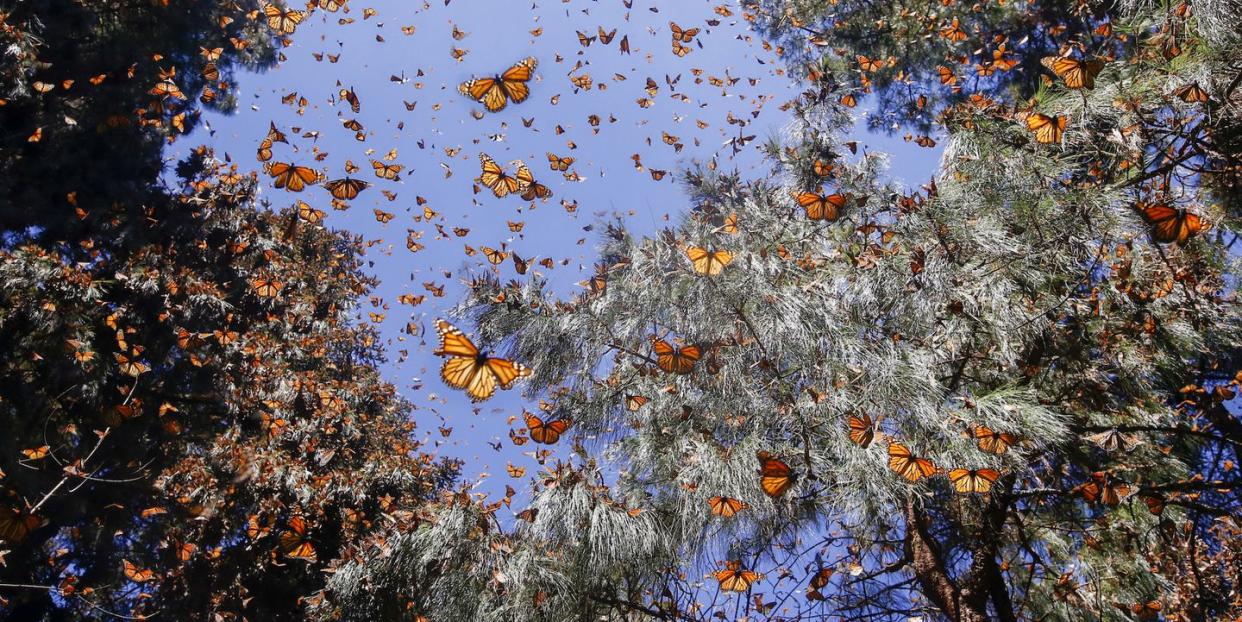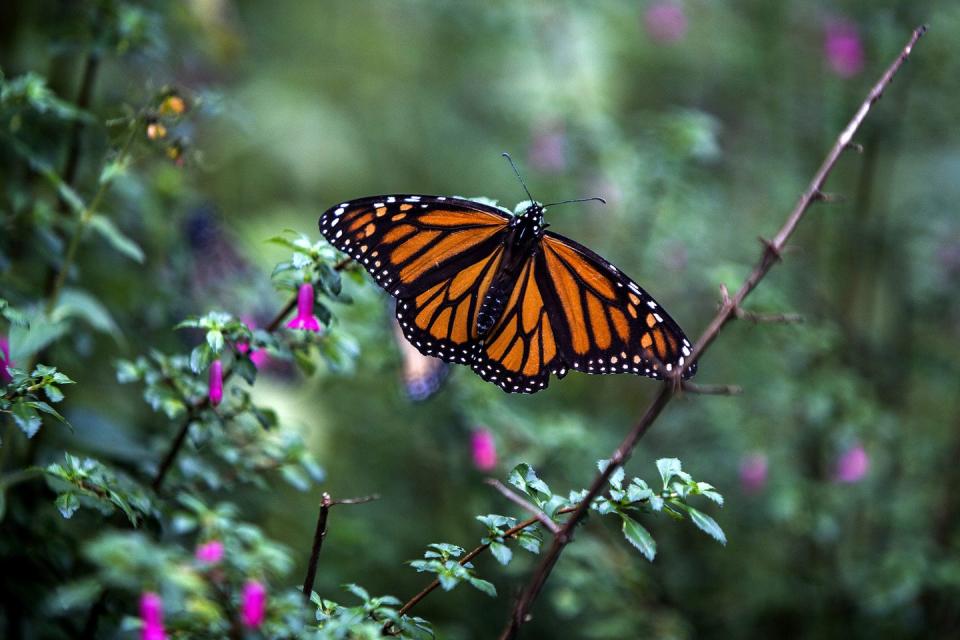We Leave the Milkweed Standing as a Monument to a Vanishing World

All around our house, there are thick stands of milkweed. They grow tall all summer so that, by August, Monarch butterflies will dance amid them. (Milkweed is catnip for Monarchs. The only good comparison around the yard is the thistle we leave up so as to tempt the goldfinches.) This plague summer has been no different. Outside, doing yard work, sweating behind the mask and trying to avoid the neighbors, I look upon the Monarchs darting amid the milkweed as a reward for being a good immunological citizen.
Now, however, I read in the Boston Review that the other end of the Monarch supply chain, in Mexico, to which the Monarchs migrate every winter, is largely destroying itself with the invaluable help of humans.
On January 29, 2020, Homero Gómez González, who managed Mexico’s El Rosario Monarch Butterfly Preserve, was found floating in a reservoir with his head bashed in. Then on February 1, a second butterfly protector, Raúl Hernández Romero, was found stabbed to death on a hilltop not far away. Both murders occurred in the Mexican state of Michoacán, directly west of Mexico City. Michoacán is home to the world’s largest monarch roosts, but it is also a hotspot for violence stemming from organized crime.
Meanwhile, 700 miles north, Mariana Treviño-Wright, executive director of the National Butterfly Center in Mission, Texas, has endured months of escalating rape and death threats in response to her butterfly conservation work along the Rio Grande. The center is an ecological mecca and home to 240 species of butterflies, a third of the total found within the United States. Treviño-Wright had imagined that butterfly protection might fall outside U.S. political polarities. But the sanctuary has the misfortune of abutting the politically tumultuous Rio Grande in the age of Trump.
Surely, the era of El Caudillo del Mar-a-Lago will leave the butterflies untouched, right? One little, fluttering burst of beauty in a dismal, disease-haunted world? At least that?
No.
As a result, Treviño-Wright, to her terror and astonishment, has found herself in the crosshairs of white nationalists hellbent on erecting a border wall. Leading the attacks against her is Brian Kolfage, a triple-amputee war veteran and founder of We Build the Wall, Inc. The group arose out of a frustration that obstructionist “left-wing politicians” were thwarting Trump’s wall project. So Kolfage and his followers decided to go freelance. In December 2018, they launched a GoFundMe campaign that has $25.5 million pledged from a quarter million donors. When it became clear to them that it was not legally possible to donate the funds toward the government’s border wall, they committed to using the funds to privately build a wall along the southern border.

After erecting short, unauthorized sections of wall on private land in Florida and New Mexico, the group set up shop building several miles of wall on private land in Mission, directly on the banks of the Rio Grande and nearly abutting the National Butterfly Center. In December 2019, the North American Butterfly Center obtained a temporary restraining order halting We Build the Wall’s construction on environmental grounds, which has only worsened the hatred directed at Treviño-Wright. Even before the injunction, Kolfage had traduced the sanctuary on Twitter as a den of butterfly smuggling and a front for “rampant sex trade.”
These really are the mole people.
In addition, the Monarchs migrate to one of the poorest states in Mexico, where they find the kind of fir trees in which they can winter. Unfortunately, the fir trees also are valuable timber and illegal logging is rampant. This already has gotten a couple of local activists killed. The fact is that the Monarch knew that we lived in an interconnected world long before Goldman Sachs or Citibank tumbled to it. It knew that life had a precarious balance long before anyone had sunk an oil well anywhere.
Monarchs’ survival depends on two groups of plants—the oyamel firs down south and milkweed up north—that anchor their life cycle. Climate disruption is stressing the Michoacán firs at one end of the journey and milkweed at the other. Monarchs and milkweed didn’t coevolve in fields doused with Roundup. And too often the grassy verges of North American highways and parks where milkweed flourishes get mown to smithereens, interrupting the monarchs’ breeding cycle. Moreover, monarchs head south during early fall, the apex of hurricane season. As the oceans warm, hurricanes are growing more severe, further jeopardizing these delicate travelers. In short, the 2-million-year-old arc of migrant monarch life depends on rhythms ill matched to an increasingly arrhythmic world.
We leave the milkweed standing as a kind of monument to a vanishing world, little bits of color flashing within the green, and then gone.
Respond to this post on the Esquire Politics Facebook page here.
You Might Also Like

